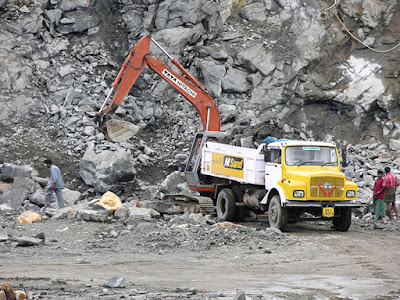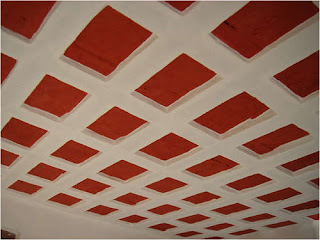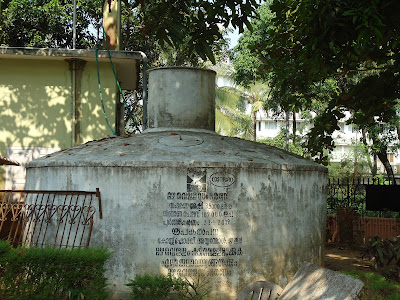Home Automation in simple basic terms, mean anything that gives us a remote or automatic control of things around our home. As the world gets more and more technologically advanced, we find new technology coming in deeper and deeper into our personal lives at home. Home automation is becoming more and more popular around the world and is becoming a common practice in today’s world.
The process of home automation works by making everything in the house automatically controlled using technology to control and do the jobs that we would normally do manually. It is much easier to install home automation in a house while it is still being built, since you have the ability to put things inside the walls to save space. Though, people who have houses already built can still have home automation done in a less intrusive way through wireless systems.
Home automation takes care of a lot of different activities in the house. Some of these things are as simple as turning on the sprinklers at a certain time every day and detecting burglars in the middle of the night. Others are much more advanced like sensing the presence of the person in a room and adjusting light ambiance, the temperature in the room, the volume of the music, according to different factors like the day of the week and the time.
The systems that you can control include-
Lighting,
Appliances,
Heating and cooling,
Security and monitoring systems,
Entertainment (home audio and video),
Communications (telephones and intercoms, internet),
Lawn sprinklers,
Curtain movements,
Gate door motor,
Shade motor control,
Keyless entry etc.
The concept of home automation is to connect all of these systems and devices to a central controller so that they can be controlled from anywhere and react to one another. For example, as you arrive home, your home-automation system can automatically open the gate door, unlock the front door and disable the alarm, light the downstairs, and turn on the TV. Or if you power on the DVD player, it might automatically dim the lights, draw the shades, and direct all calls to voicemail.
This central controller can be accessed and controlled through interfaces like keypad, wired or wireless touch-screens (with/without video), universal remotes, mobile devices such as a cell phone or PDA, any PC, at home, in the office, or on the road.
The central controller has various peripheral devices connected to it so that it can receive and send signals to them for appropriate controls. These peripheral devices can be Lighting Controllers, Switches, Lighting Dimmers, Wireless security transmitters, Door contactors, PIR sensors, Infrared keyfobs, Fire/smoke detectors, Sprinklers, Sirens, audio controllers, speakers, temperature sensors, thermostats, cameras, televisions, CCTV, appliances etc.
If appropriately specified, installed, operated and maintained, advanced lighting control strategies can reduce energy costs from 15 to 55% in your home, either by keeping lights off when and where they are not needed or by lowering light levels to correspond to the task at hand. In addition, lighting controls can increase occupant satisfaction and productivity by allowing users to tailor lighting levels to their personal needs and by optimizing light levels for the work environment.
To make sure that your new house being built in Kerala can be adapted to Home Automation Systems, have it installed with structured cabling.
The telecommunications cabling in a modern home supports a large and growing number of applications, including voice telephony, data networking, personal computers, printers, Internet access, and other applications, entertainment equipment like TV, home theater, whole-house audio, and home automation equipment, lighting control and security systems. For ease and convenience it is necessary that the new home should have single cabling infrastructure with CAT 5 or CAT 6 cables.
Though sophisticated Wi-Fi equipments are there in the market, yet looking in to the promising future of IPTV etc. it becomes essential to go for high bandwidth solution. Entertainment applications, such as streaming video, typically use much more bandwidth than the voice and data applications. Therefore, a modern residence often requires more bandwidth than a typical office and needs to have structured cabling.
Benefits of Home Automation-
Convenience
We’ve all gotten used to controlling our TV from the couch; just wait until you are able to dim the lights as well. Imagine adjusting the temperature from your bed or controlling the volume of your whole-house audio system from any room. Or imagine the wall/ceiling heater in your bathroom coming on automatically on chilly mornings 5 minutes before your alarm clock goes off so that it is warm when you enter. Many of the Home Automation products also save energy.
Safety
Automatic Gate opening systems are getting common these days, but you’ll be surprised how much safer you’ll feel coming home to a lit home and even turning on more lights from your keyfob remote upon your arrival. With a couple of basic products you can have your whole house light up when there is motion detected at any corner of your house. Imagine your house sending you an email if there is motion where there shouldn’t be any. Or you can have your security system call you if there is an alarm, which might include your typical security alarm or even a low or high temperature or water in the laundry room or basement.
Fun
High-tech products for the home are fun to use and share with others. Whether viewing visitors at your front door on your TV or tuning your stereo by using voice recognition, you’ll find home automation surprisingly enjoyable.
Some Home Automation companies that service Kerala are the following-
Eloka Enterprises Kerala
Ist Floor B Wing, 30/120B, Pranavam Tower,
Pettah Junction,
Poonithura, Cochin 682038.
Landmark : Varkeys Super Market
Mobile : +91 - 99955 87415 / 95678 62880
E-Mail : Support@Eloka.Net
Eloka Trivandrum
Future Desinz,
TC 13 / 1136, Kannammoola,
Trivandrum 695011
Mobile : +91 - 98470 65252 / 98472 99664.
E-Mail : Support@Eloka.Net
Netsys Consultants
A51/ Mosk road
Frazer town
Bangalore, India
T. +91 80 4563787
F. +91 80 4563798
E. info-ind@netsysconsultants.com
Honeywell Automation India Ltd.
No. 2234, 23rd Cross,
Banashankari 2nd stage,
Bangalore - 560070
Tel: 91-80-66146565
Fax No. 91-80-66146566
Controls & Schematics India
Kochi, Kerala
Website:http://www.csindia.biz
Tel: 91-98470 66638























































